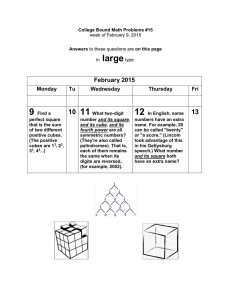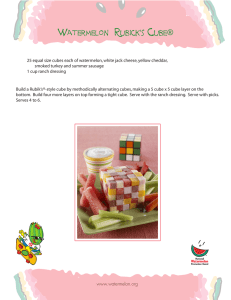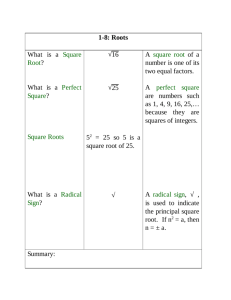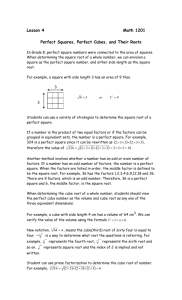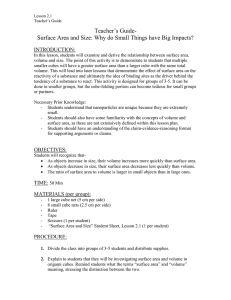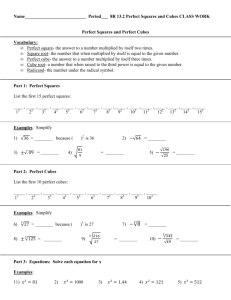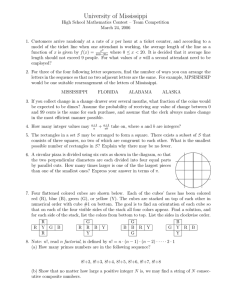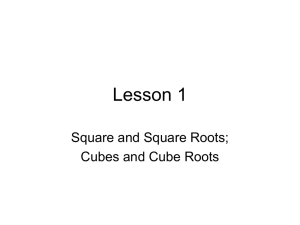Roots - Target Range School
advertisement
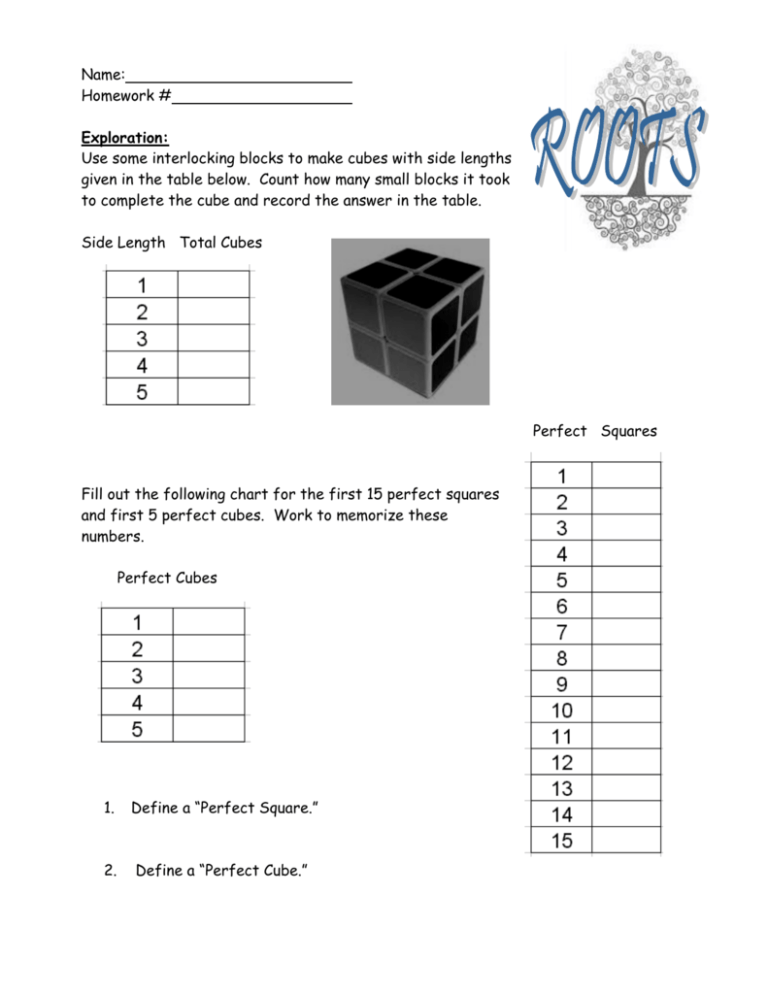
Name: Homework # Exploration: Use some interlocking blocks to make cubes with side lengths given in the table below. Count how many small blocks it took to complete the cube and record the answer in the table. Side Length Total Cubes Perfect Squares Fill out the following chart for the first 15 perfect squares and first 5 perfect cubes. Work to memorize these numbers. Perfect Cubes 1. Define a “Perfect Square.” 2. Define a “Perfect Cube.” 3. Why do numbers have both a positive and negative square root? 4. Explain how you estimate the value of 19 between two whole numbers. 5. Make a square with a side length of 5. What is the area of the square? ______ Therefore, 52 = ______, and the square root of 25 = _______. 6. Use colored square tiles to make a square with an area of 16. What is the length of a side of your square? ______ Therefore, the square root of 16 equals ______ . 7. Give each value of the cube root. a. 3 b. 8 3 64 c. 3 125 8. Estimate each cube root between two integers. Use the chart on the front. a. 3 b. 30 3 100 c. 3 200 9. For each pair, estimate each root to the nearest integer in order to determine which one is larger. a. 3 15 or 10 b. 3 90 or 15 24 or c. 3 75 10. Describe in complete sentences how you estimate the value of a cube root that is not a perfect cube.
